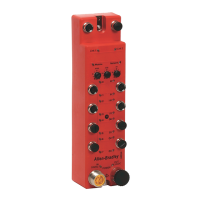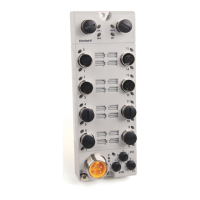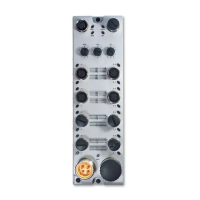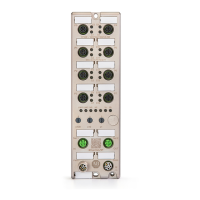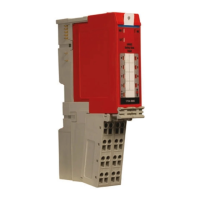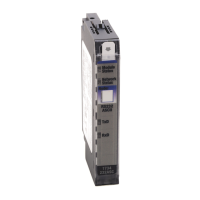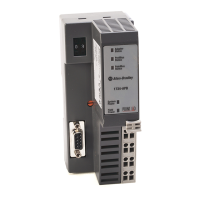Rockwell Automation Publication 1791ES-UM001G-EN-P - November 2016 17
Safety Function Operation Chapter 1
Set Dual-channel Mode and Discrepancy Time
To support redundant channel safety devices, the consistency between signals
on two channels can be evaluated. Either equivalent or complementary can be
selected. This function monitors the time during which there is a discrepancy
between the two channels.
If the length of the discrepancy exceeds the configured discrepancy time, the
safety input data and the individual-safety input status turn off for both
channels. The configured discrepancy time is 0…65,530 ms in increments of
10 ms.
Table 2
shows the relation between input terminal states and controller input
data and status.
Dual-channels, Equivalent
In Equivalent mode, both inputs of a pair must typically be in the same
(equivalent) state. When a transition occurs in one channel of the pair, before
the transition of the second channel of the pair, a discrepancy occurs. If the
second channel transitions to the appropriate state before the discrepancy time
elapses, the inputs are considered equivalent. If the second transition does not
IMPORTANT The dual-channel function is used with two consecutive inputs that are
paired together, this process starts at an even input number, such as
inputs 0 and 1; 2 and 3; and so on.
IMPORTANT Do not set the discrepancy time longer than necessary. The purpose of
the discrepancy time is to allow for normal differences between contact
switching when demands are placed on safety inputs. For this testing to
operate correctly, only one demand on the safety input is expected
during the discrepancy time. If the discrepancy time is set too high, and
multiple demands occur during this time, then both safety input
channels will fault.
Table 2 - Terminal Input Status and Controller I/O Data
Dual-channel Mode Input Terminal Controller Input Data and Status Dual- channel
Resultant
Data
Dual-channel
Resultant
Status
IN0 IN1 Safety
Input 0 Data
Safety
Input 1 Data
Safety
Input 0 Status
Safety
Input 1 Status
Dual-channels, Equivalent OFF OFF OFF OFF ON ON OFF Normal
OFF ON OFF OFF OFF OFF OFF Fault
ON OFF OFF OFF OFF OFF OFF Fault
ON ON ON ON ON ON ON Normal
Dual-channels, Complementary OFF OFF OFF ON OFF OFF OFF Fault
OFF ON OFF ON ON ON OFF Normal
ON OFF ON OFF ON ON ON Normal
ON ON OFF ON OFF OFF OFF Fault

